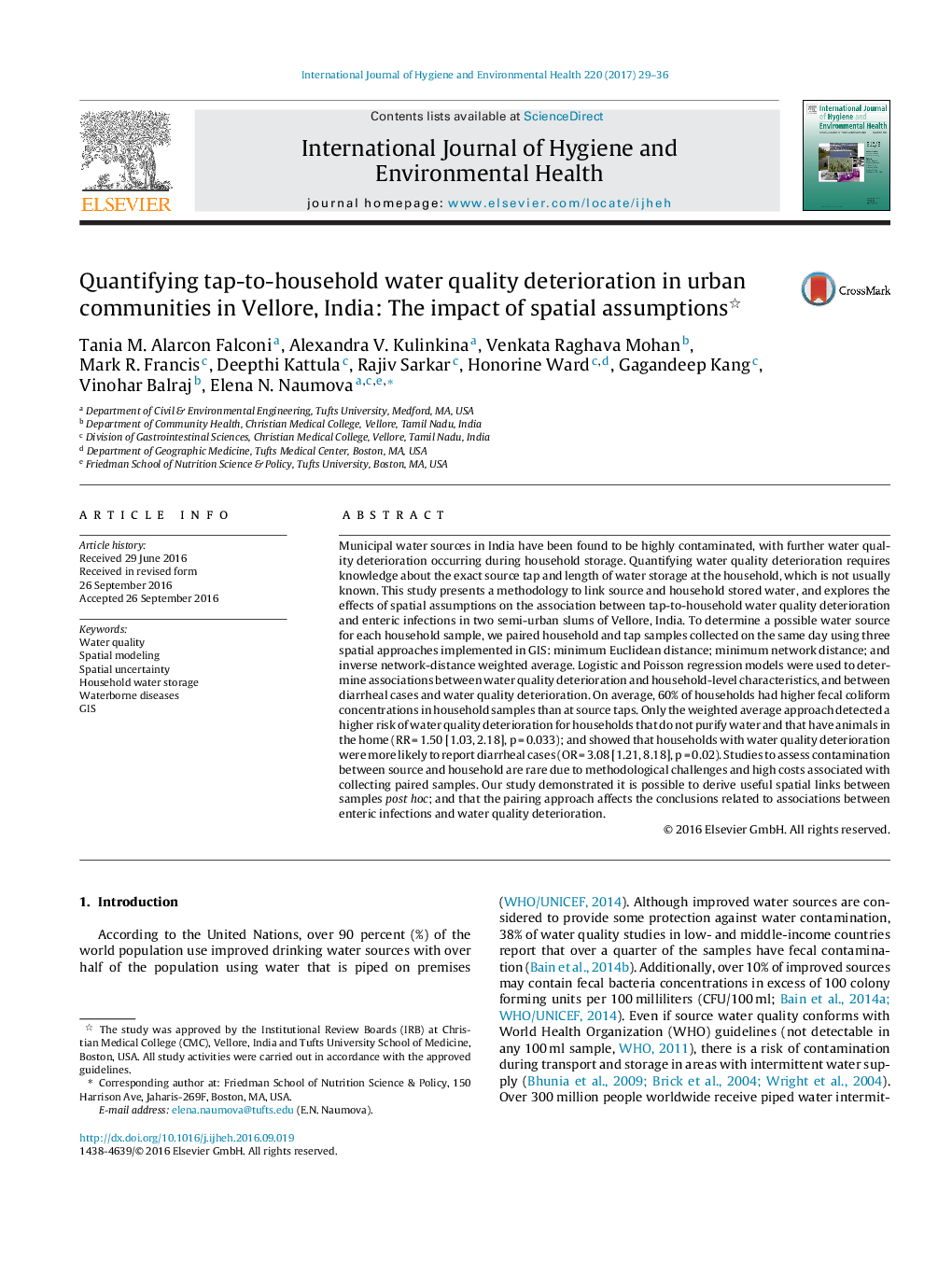| کد مقاله | کد نشریه | سال انتشار | مقاله انگلیسی | نسخه تمام متن |
|---|---|---|---|---|
| 5560597 | 1561877 | 2017 | 8 صفحه PDF | دانلود رایگان |

Municipal water sources in India have been found to be highly contaminated, with further water quality deterioration occurring during household storage. Quantifying water quality deterioration requires knowledge about the exact source tap and length of water storage at the household, which is not usually known. This study presents a methodology to link source and household stored water, and explores the effects of spatial assumptions on the association between tap-to-household water quality deterioration and enteric infections in two semi-urban slums of Vellore, India. To determine a possible water source for each household sample, we paired household and tap samples collected on the same day using three spatial approaches implemented in GIS: minimum Euclidean distance; minimum network distance; and inverse network-distance weighted average. Logistic and Poisson regression models were used to determine associations between water quality deterioration and household-level characteristics, and between diarrheal cases and water quality deterioration. On average, 60% of households had higher fecal coliform concentrations in household samples than at source taps. Only the weighted average approach detected a higher risk of water quality deterioration for households that do not purify water and that have animals in the home (RR = 1.50 [1.03, 2.18], p = 0.033); and showed that households with water quality deterioration were more likely to report diarrheal cases (OR = 3.08 [1.21, 8.18], p = 0.02). Studies to assess contamination between source and household are rare due to methodological challenges and high costs associated with collecting paired samples. Our study demonstrated it is possible to derive useful spatial links between samples post hoc; and that the pairing approach affects the conclusions related to associations between enteric infections and water quality deterioration.
Journal: International Journal of Hygiene and Environmental Health - Volume 220, Issue 1, January 2017, Pages 29-36